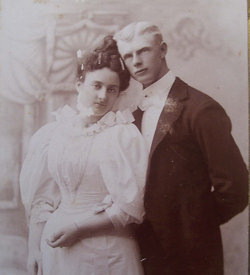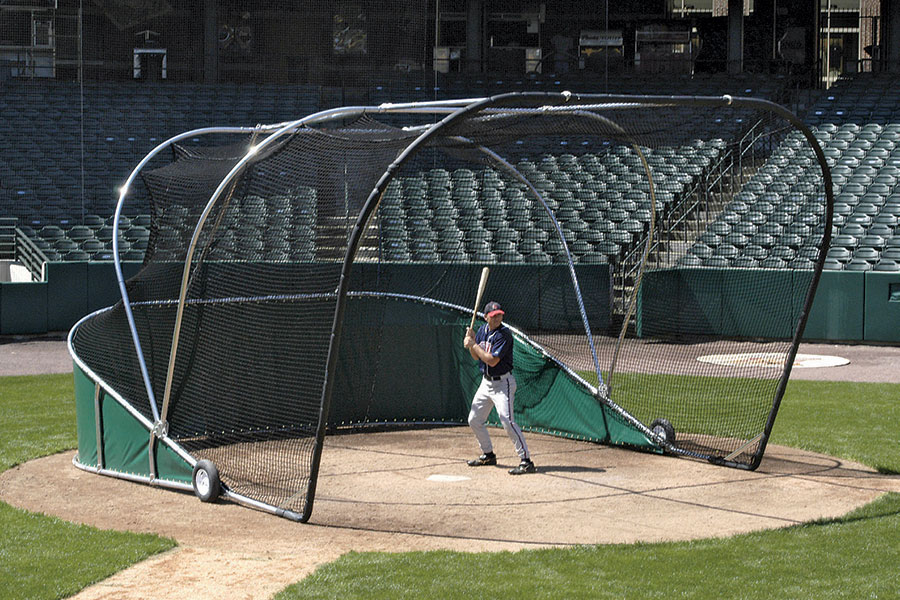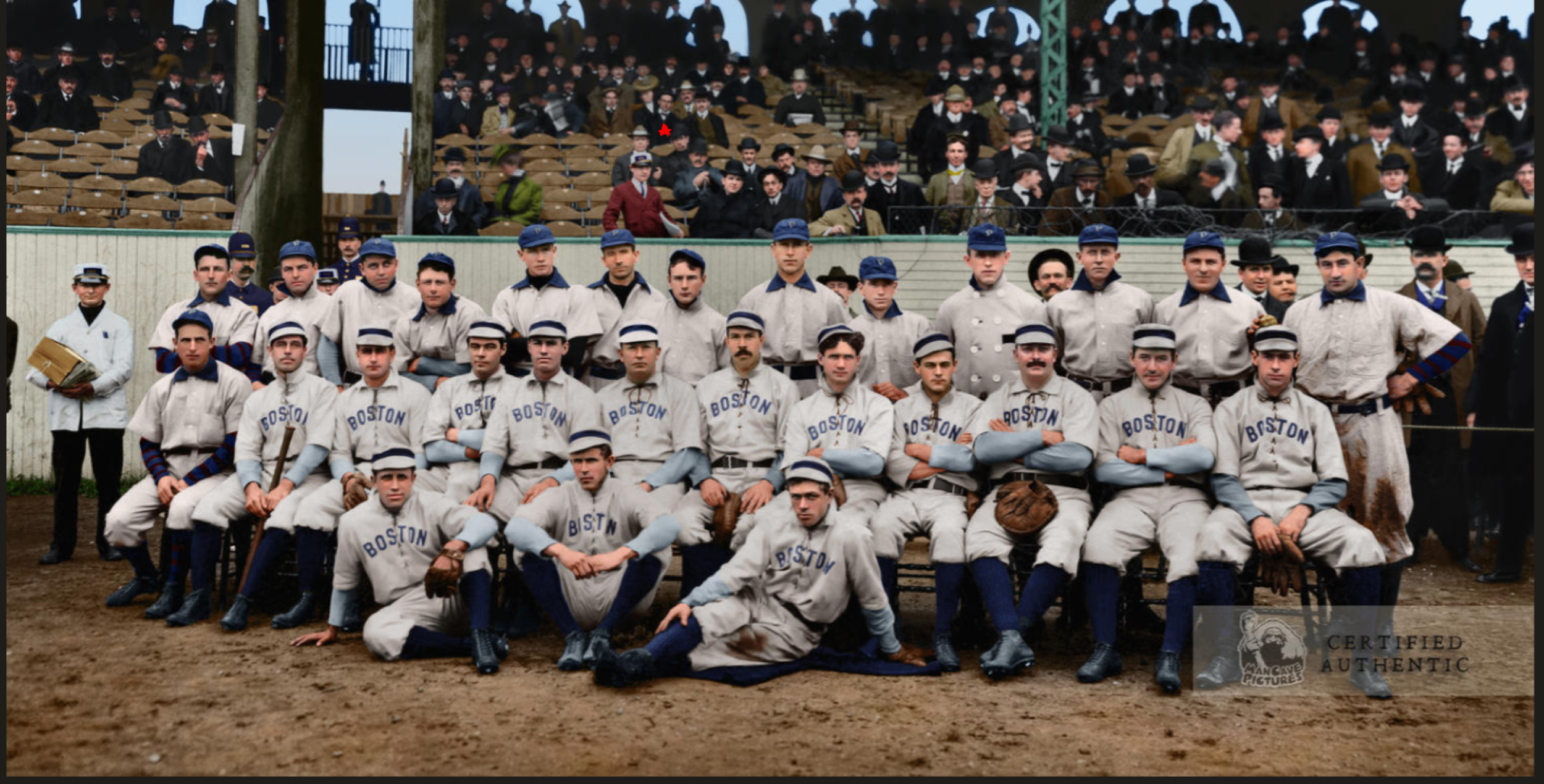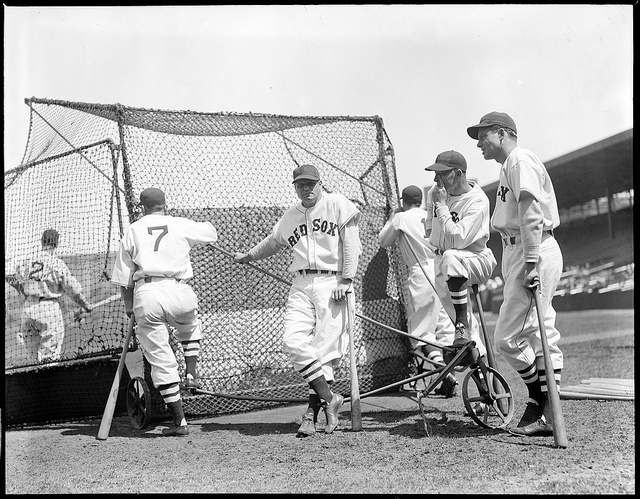THE BASEBALL HISTORY COMES ALIVE BLOG
Please note: As we compose new blog entries, we will now send each one out to all our subscribers as we post them. Here’s a link to see the entire Blog Archives -GL
December 22, 2021
Today we welcome a guest post from Kevin Barwin, sharing with us some interesting information about the origin of something we take for granted but is an essential component of the game: the backstop. As kids, we all remember the thrill of getting to major league games early to watch batting practice and to see the players hanging around the cage, engaged in easy-going baseball banter awaiting their turn at-bat. Those were the days! Thanks to Kevin’s essay, we now know who to thank. I think you’ll enjoy what Kevin has to tell us. –GL
“WELLING”-A Backstop Invents a Backstop!
Ever since Abner Doubleday supposedly invented the great game of baseball in Cooperstown, N.Y. in 1839 other men have made improvements down through the innings: Alexander Cartwright codified the rules in 1845, Candy Cummings began to curve a baseball around 1867, Jim Tying wore a mask behind the plate made by his Harvard teammate Fred Thayer in 1875, Roger Bresnahan popularized shinguards in 1907, Elston Howard created the batting doughnut in the 1960s, and so on and so on.
These fellows are usually mentioned in articles about baseball firsts, but one such baseball inventor is rarely spoken or written about. I would say that’s a shame because Wellington Stockton Titus, baseball inventor, has likely affected more baseball practices and games than anyone, from the major Leagues on down to the lowest level of Little League. You understand, Wellington invented the baseball backstop/baseball batting cage.
“Welling”, as he was known to acquaintances, was born on April 21, 1872, at Marshalls Corners, now Hopewell, N.J. to farmers Livingston and Charity Hart Titus. He married Amanda Burd in 1895 and settled in Hopewell where he

distinguished himself as a fine sandlot ballplayer and as a “rigger” or builder by profession. Actually, his specialty was moving houses and other buildings.
Although he only completed the eighth grade, it is said that civil engineering students from nearby Princeton College would come and watch and marvel at his expertise when he did his thing. Welling utilized horses, beams, skids, jacks, cables, soap, and a windlass to perform his marvelous edifice moving miracles. Besides moving buildings, Welling also built houses, a couple for himself and one for his mother-in-law, among others. Building repairs were also his forte.
(In the featured photo above, we see Hall-of-Famers Jimmie Foxx, Heine Manush, and Rick Farrell, along with other Red Sox teammates, hanging around the batting cage awaiting their turn at-bat, probably from 1936).
In his leisure hours as a catcher with the Hopewell Athletic Club, Welling grew tired of chasing down foul balls and wild pitches. Patrons would throw the ball back on the field in those days; or if a team had enough money they would hire ball boys to fetch the errant spheres, all of which delayed the action. So in 1906 he designed and patented the backstop as we know it today.
Welling was 34 when he put his baseball enclosure on blueprint. Maybe his age—a little long in the at-bat for a catcher of his years—prodded his brain to save his legs from chasing baseballs. In any case, this wired-poled contraption surrounded the batting area and overhung the catcher and the umpire. Now passed balls and foul balls clanked and fell against the semi-circle metal monster and remained in close proximity to the catcher. In addition, it was portable and usable indoors or out.
Obviously, it was a huge success. Catchers loved it and team owners quickly saw the benefit of not losing baseballs to cranks and urchins, for balls in those days

were a costly item and generally used until their covers fell off. Titus contracted with the A. G. Spalding and Brothers sporting goods company to manufacture and sell the cages, Welling to receive $5.00 for every one sold. Soon, they were in every baseball park in the country. It is a wonder that it took almost 60 years of baseball before this ingenious device was invented.
There is no record of how much money Titus earned from his idea and we don’t know when he hung up his “tools of ignorance.” but we do know he kept on constructing. At age 70 in 1941 while working on a building at a nearby airport Titus fell from a ladder and broke his hip. He died nine days later as a result of the mishap. Allegedly, he patented other inventions including a modified baseball bat, a new type of knitting needles, and a type of bootjack, but his backstops were his pride and joy and his claim to baseball immortality.
Kevin Barwin
With thanks to A History of Inventing in New Jersey; From Thomas Edison to the Ice Cream Cone by Linda J. Barth, A Stitch in Time by Gene Elston, and the Hopewell Herald.
Red Sox photo from the Leslie Jones Boston Public Library collection
As always, we enjoy reading your comments
Here’s a link to see the entire Blog Archives



This is an intriguing article, in large part because it’s so far off the beaten track. Much appreciated, Dr. Barwin!
Unfortunately the discerning reader may notice a harmless error early on, where Elston Howard is credited with creating the batting donut. Few know that it was actually the brain-child of one (1) Dave Duncan. (No booing, please.)
But seriously, a great job here. Give us more!
Best wishes,
Michael
I will stick with Howard as the inventor. I bought one from him in 1968.
Back in the day, Kevin, we used to go two-on-two, pitching and batting against each other, at the varsity baseball field at Tomaques Park in Westfield, NJ. We’d call balls and strikes and basically anything hard hit would be a man on base. There would be an occasional “belt” where we’d award a double. Great competitive games.
And we owed the wonderful convenience of the big batting cage to the genius of Wellington Stockton Titus!
Good job, thanks!